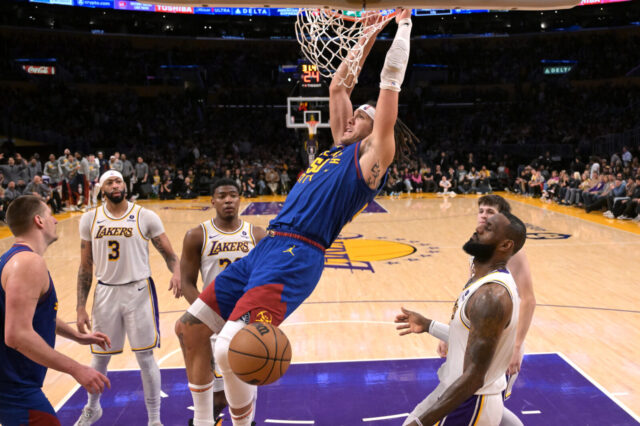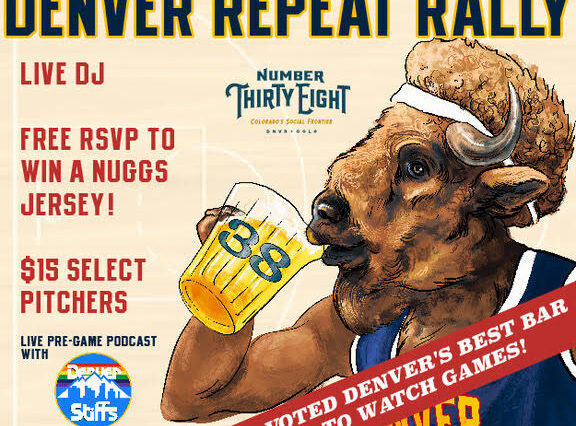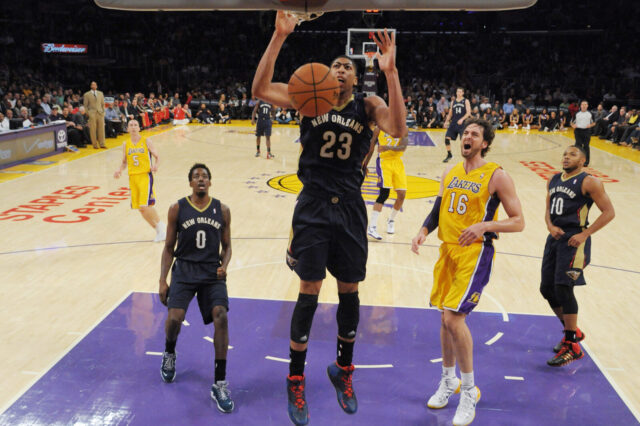When the pick-and-roll is run to perfection it is the most unstoppable play in the NBA. Don’t believe me? Go back and watch any Utah Jazz game featuring John Stockton and Karl Malone. The Mailman was able to play in the league for 18 seasons from 1985-2004 and was the perfect screen man who could pick-and-pop (receive a pass from Stockton after setting a screen and hit a jump-shot) or pick-and-roll (receive a pass while on his way to the rim after setting a screen and finish with a thunderous dunk).
Here is Malone explaining the art of the pick-and-roll with some old footage of his play:
As they say in the above video, even though you knew the Jazz were going to run the same play over and over, topping it proved rather difficult. There are just so many options on the play: give the ball to Malone for a jumper, find Malone rolling to the rim for a layup or dunk, Stockton could immediately shoot the ball off the screen if he was open, if you played Stockton tight he could use his speed to go right around you for a layup or jumper of his own, or Stockton could find a teammate left open as defensive rotations broke down from trying to cover the duo.
Watching the Nuggets first game, my focus began to hone in on how Brian Shaw would cover the Kings pick-and-rolls. It was pointed out to me on Twitter by @DanMikan that Denver was covering the Kings’ pick-and-rolls differently with their power forwards versus their centers; meaning that J.J. Hickson, Kenneth Faried, and Darrell Arthur had different assignments than JaVale McGee and Timofey Mozgov when their men were setting screens. Why would this be?
Well, Malone wasn't the first power forward to be able to hit jumper on a consistent basis, but the way he ran the pick-and-roll with Stockton helped make the play a staple in the NBA and helped skilled big men find new roles.
"Most teams nowadays play a spread pick-and-roll situation," said Nuggets head coach Brian Shaw. "So, they have fours [power forwards] that pick-and-pop and stay out around the three point line."
The Nuggets must find a way to defend the athletic and skilled power forwards in Shaw's one-on-one, no doubling, scheme.
"With our fours, and their athletic ability and quickness, we want them to basically blitz or show on the screen-and-rolls and get back to their man." said Shaw.
This means that when Hickson’s man (or Faried or Arthur’s man) is setting the screen, that means Hickson must meet the guard on the other side to prevent dribble penetration and once he stops the guard and Ty Lawson is back to defend him after fighting through he screen, then Hickson has to get back to his man. So, how about with the centers?
"With our fives," said Shaw. "We want to keep them closer to the basket so they are in what we call a "drop". We like to handle the middle pick-and-roll between the ones [point guards] and the fives, between just those two players, so we want our ones to chase them basically into our centers and make them have to finish over our centers."
This means that when Timofey Mozgov’s man (or JaVale McGee’s man) is the screen setter that you won’t often see Moz meet the guard up where the screen occurs. Instead, Moz will be a few feet away so the guard cannot use his quickness to get around the big center for an easy rim attacking opportunity, while Moz would be chasing from behind and could easily foul said guard. It will be key for Lawson (or any of Denver’s other guards) to fight through the screen and not allow for a wide open jumper from the guard. The Kings got a couple open jumpers on those plays, but that’s a lower percentage shot than a layup, that could be compounded with a foul from a Nuggets center.
But what about the recovery? What is Mozgov supposed to do after he stops the guard?
"Timo's probably the best on our team, position wise, at just staying between the ball and the basket," said Shaw. "Being able to, what I call, sniff out the pickup; when the guard picks the ball up to get back to his man and let our guards challenge from behind."
It may seem odd that Shaw is willing to get into so much detail about the pick-and-roll coverage the Nuggets will use, but it's not really "giving away state secrets" how NBA teams defend these plays.
“It’s a defense that a lot of the good defensive teams employ and schemes that the good defensive teams employ,” said Shaw. “We did that in Indiana with a rim protector like Roy Hibbert. Boston [with Doc Rivers] and Chicago, those teams kind of do some of the same things. I feel pretty good about our schemes when we follow what we are supposed to do.”
And flipping the script, the Nuggets have some talented players when it comes to running the pick-and-roll on the offensive end. Lawson, Nate Robinson, and Andre Miller are all very capable guards at hitting jumpers, attacking the rim, and finding roll men with either bounces passes or lobs. And the Nuggets have some dangerous roll men, especially with Hickson, Faried, McGee, and Arthur.
Shaw wants to see more pick-and-roll play from his team and knows that it may take time for the new offense to be trusted by his players.
"Another thing that a lot of teams are doing now, they are "bluing" it or they are keeping the ball on one side [of the half-court]," said Shaw. "We have what we call a "blue attack" and when we've done it we have scored or got something good probably 90-percent of the time. For whatever reason we just haven't trusted it, we go away from it. That's something that we drilled [Oct. 30th] in shoot-around. When we play a team that has that kind of defensive scheme, it's an automatic that we go into our "blue attack". It's all part of the process, just learning to trust not just one-another, but learning to trust our system and our schemes and let that carry us through."
We should see more pick-and-roll with the Nuggets and once Lawson develops some chemistry with his roll men, especially Hickson, we could see some electrifying finishes.


